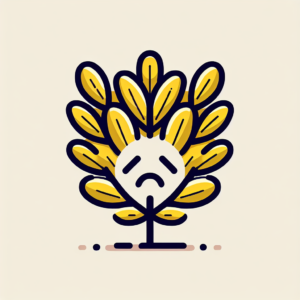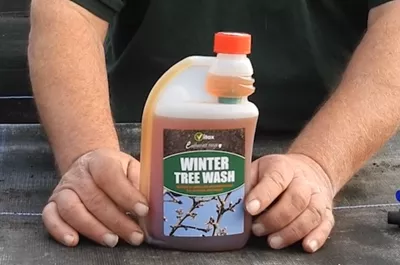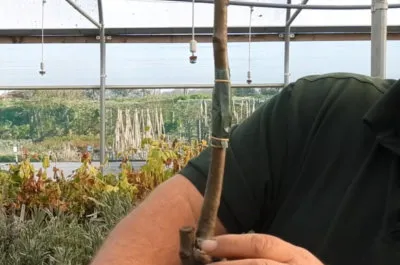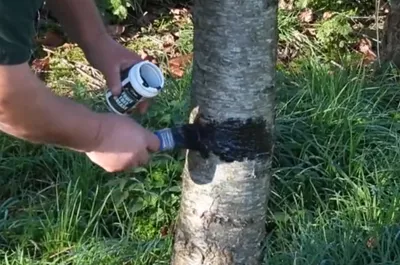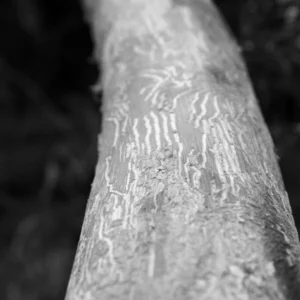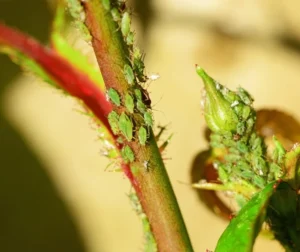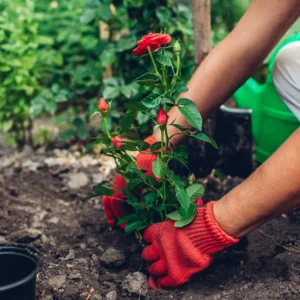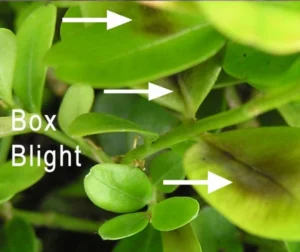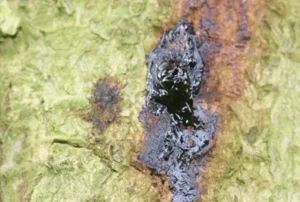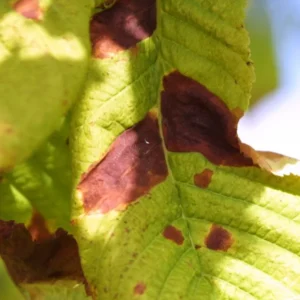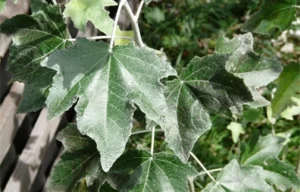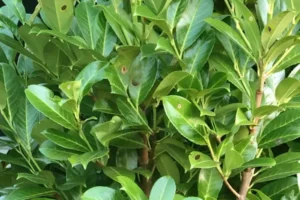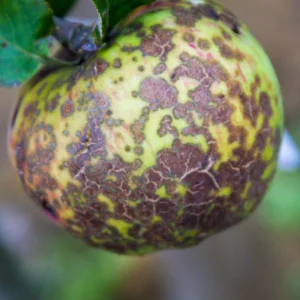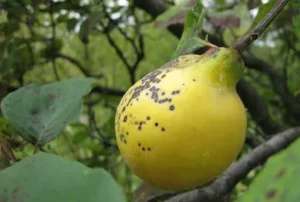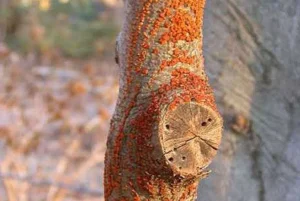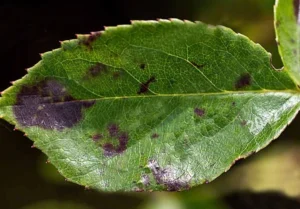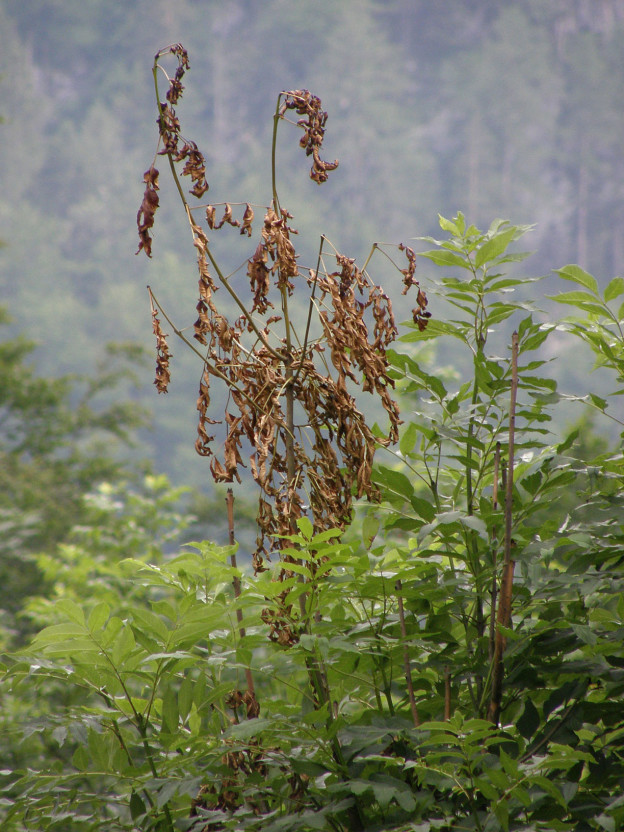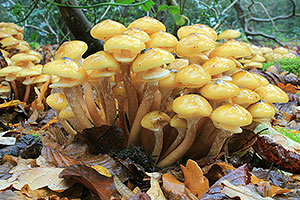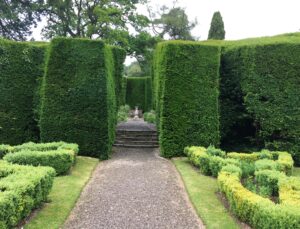It is true that Cherry Laurel, Prunus laurocerasus, is a trooper and will grow almost anywhere, but that is not the same as looking tip top as a hedge in all situations. A few yellow leaves here and there are natural, especially in the early years after transplanting when it’s still catching up on root… Continue reading Why Are My Cherry Laurel Leaves Turning Yellow?
Category: Plant Pests & Diseases
Applying Winter Wash Fruit Tree Insecticide
How to Apply Winter Wash to Fruit Trees It’s good to apply winter wash to your fruit and ornamental trees in the winter when there are no leaves on the trees (the spray will scorch leaves, so it is only suitable for winter use). Our winter wash is an organic pesticide that works by attacking the waxy compounds that make up… Continue reading Applying Winter Wash Fruit Tree Insecticide
Apply Fruit Tree Grease Bands to Protect them against Moths
Grease Bands are Convenient on Young Fruit Trees If you apply grease bands to your young fruit trees, it will help prevent winter moths laying their eggs. When these hatch, the caterpillars eat the leaves and fruit. You only use grease bands on younger fruit trees with smooth bark, older trees need to be painted with grease. VIDEO… Continue reading Apply Fruit Tree Grease Bands to Protect them against Moths
Apply Grease to Fruit Trees to Protect them against Moths
Applying fruit tree grease from November onwards is used to trap a wide variety of winter moths before they can lay their eggs and preventing caterpillars eating the leaves and fruit. In the video below, we show you how to apply the grease to protect your fruit trees. You will need an old paint brush to apply the… Continue reading Apply Grease to Fruit Trees to Protect them against Moths
Dutch Elm Disease
Dutch elm disease (DED) is caused by Ophiostoma novo-ulmi and Ophiostoma ulmi fungi, which primarily attack members of the Ulmus family (Elm trees). The disease probably arose in the far East and was introduced to Europe in about 1910, arriving in the USA a few years later; it was just identified in the Netherlands first. European and American elms trees which… Continue reading Dutch Elm Disease
Rose Pests and Diseases
Deer love the top shoots, buds and foliage Leaving ragged stems and bare branches as they go. They are particularly attracted to new planting out of sheer inquisitiveness. Deer tend to graze at night so it is difficult to frighten them off. They are more of a pest when foraging elsewhere is reduced; when berries or… Continue reading Rose Pests and Diseases
Rose Replant Disease
What is rose replant disease? Rose replant disease is probably the most common example of specific replant disease, which can affect several other trees in the rose family, including all the fruit trees commonly grown in the UK. It occurs when you try to plant a new rose right in the same soil one was… Continue reading Rose Replant Disease
Box Blight Disease
Box Blight refers to two separate fungi that attack Common Box and Dwarf Box.It does not affect Box-Leaf Holly, nor Sweet Box. The two fungi can be present together. Cylindrocladium buxicola is relatively new in the UK. It causes dead spots on leaves, and eventually full defoliation, killing the plant. It can be identified by the wispy grey-white fungus on the… Continue reading Box Blight Disease
Horse Chestnut Tree Canker Disease
Horse Chestnut Canker, caused by the bacteria Pseudomonas syringae pv aesculi, is the most serious disease affecting trees in the Aesculus family. The canker will attack trees of all ages and is most dangerous on trees in the age range up to 30 years old, after which their trunks get wide enough for girdling to… Continue reading Horse Chestnut Tree Canker Disease
Horse Chestnut Leaf Blotch
What are these brown spots on my conker tree’s leaves? Horse Chestnut Leaf Blotch is a fungal condition called Guignardia aesculi that affects horse chestnuts, not sweet chestnut. The main symptom is irregular brown blotches on the leaves, starting at the edges, from late June. Although Horse Chestnut leaf blotch is not pretty, it does not… Continue reading Horse Chestnut Leaf Blotch
Silver Leaf Diagnosis & Treatment
There is no need to be afraid of Silver Leaf disease, which rarely affects Cherry and Plum trees in gardens, and even then typically on old trees. The disease is a concern for orchard owners, who have their livelihoods on the line with long rows of the same variety, creating the ideal environment for disease to spread. With that said, when you have a… Continue reading Silver Leaf Diagnosis & Treatment
Powdery Mildew Disease
What is this White Fungus on my Trees and Hedges? Powdery Mildew is caused by a group of fungi that form a grey-white coating on leaves. Sometimes it’s so thick that it looks like the leaves were spray-painted, and sometimes it’s hard to see the fungus itself, only the damage it causes. Powdery Mildew can… Continue reading Powdery Mildew Disease
Laurel Leave “Shot Hole” Disease
Why Are There Holes in My Laurel Leaves? If it looks like something is eating Swiss cheese style holes in your cherry laurel or Portugal laurel hedge, it’s a harmless condition called Laurel Shot Hole. It may seem like a mysterious insect has been eating your leaves, but Shot Hole is caused by a couple of different fungi,… Continue reading Laurel Leave “Shot Hole” Disease
Apple Scab & Pear Scab Disease
What is Apple Scab and Pear Scab? Apple Scab and Pear Scab are functionally the same, although the specific fungus is different: Can I eat apples and pears with Scab? Yes, apples and pears with scab are perfectly safe to eat. They only look ugly, underneath the skin they should taste the same, unless they… Continue reading Apple Scab & Pear Scab Disease
Quince Leaf Blight Disease
What are these brown spots on my quince tree’s leaves and fruit? Leaf Blight causes lots of brown splotches on leaves with dark dots in the middle. These start off reddish-brown then turn darker brown or black, typically joining up to make larger, irregular shaped patches on the leaves. Once they spread enough, the rest… Continue reading Quince Leaf Blight Disease
Coral Spot Fungus Disease
Coral Spot Identification Coral spot’s small orange-pink pustules are very distinctive. The fungus is active and producing spores almost year round, but you mainly see it in Winter. What is Coral Spot, and How Bad is It? Coral Spot fungus, Nectria cinnabarina, is mainly saprophytic, meaning it eats dead wood. But it can become a serious parasite… Continue reading Coral Spot Fungus Disease
Rose Black Spot Disease
What are these black spots and yellow patches on my rose’s leaves? Black spots on rose leaves, usually surrounded by yellowing areas, are caused by the fungus Diplocarpon rosae, the most widespread and serious fungal disease affecting members of the rose family. Black Spot spores lie dormant in the soil over Winter, then rise up and… Continue reading Rose Black Spot Disease
Ash Tree Dieback Disease Hits Somerset
It Doesn’t Seem Real Until it Happens to You Yes, folks, it finally happened to us. We had a good run, but the dieback got us, right in the Bridgwater Road, which will be closed for five days this October to take down infected Ash trees. Ash saplings infected by the Chalara fraxinea fungus were… Continue reading Ash Tree Dieback Disease Hits Somerset
Honey Fungus: The Tree Killer
What is Honey Fungus? Honey fungus is a spreading, parasitic fungus that lives on trees, woody shrubs, and occasionally herbaceous perennials. It plays a crucial role in the regeneration of forests: at the destruction end! It is capable of killing complete woodlands, which is wonderful for the churning gyre of biodiversity and evolution, but no… Continue reading Honey Fungus: The Tree Killer
Dying Yew Hedges and Trees
Yew has a reputation for being indestructible, and given fair treatment, it almost is! At the same time, Taxus baccata, like any living organism and can die prematurely. Because it is so tough, you may be able to save your tree or hedge with swift action. Here are a few reasons why yew dies when… Continue reading Dying Yew Hedges and Trees

